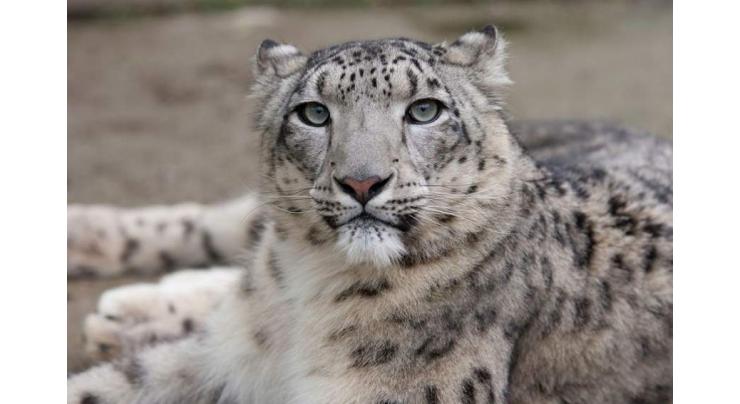
- Home
- Pakistan
- News
- Infrastructure development projects pose serious threat to Snow leopards, prey species in GB: WWF st ..
Infrastructure Development Projects Pose Serious Threat To Snow Leopards, Prey Species In GB: WWF Study
Sumaira FH Published April 05, 2024 | 06:17 PM

“Rapid infrastructure development, primarily roads, potentially degrades the Snow leopard (Panthera uncia) habitat resulting in disrupting the big cats' movement and increasing human-wildlife conflict in the Gilgit-Baltistan region. The prey species of the Snow leopard such as Himalayan ibex and domestic livestock are also killed due to heavy traffic on the highways”
ISLAMABAD, (UrduPoint / Pakistan Point News - 5th Apr, 2024) “Rapid infrastructure development, primarily roads, potentially degrades the Snow leopard (Panthera uncia) habitat resulting in disrupting the big cats' movement and increasing human-wildlife conflict in the Gilgit-Baltistan region. The prey species of the Snow leopard such as Himalayan ibex and domestic livestock are also killed due to heavy traffic on the highways”.
This has been revealed in WWF-Pakistan’s baseline research study undertaken through the project titled "Building Ecological and Sustainable Transport and Linear Infrastructure for Snow Leopards in the Hindu Kush Karakoram Himalaya Landscape in Pakistan (BEAST)".
The project was supported by the “With Snow Leopards Small Grant” (SLSG) initiated by Tencent Foundation and Shan Shui Conservation Center with support from Huatai Foundation, Amity Foundation, and Pecking University Center for Nature and Society.
The study recommended that there is need to strike a balance between boosting infrastructure development with conservation of threatened wildlife such as Snow leopards in the region. The report stated that the Gilgit Baltistan (GB) region is home to diverse wildlife including vulnerable Snow leopards. It pointed out that the linear infrastructure development, which cuts through the landscape such as roads, has fragmented the Snow leopard habitat. The report found that although linear infrastructure improves national and regional economies, it restricts wildlife movement and poses threat to the Snow leopards and their prey species such as ungulates.
Focusing on the broader road ecology theme, the study gathered evidence on infrastructure-related threats to Snow leopards and their habitat in the GB region. It collected data on wildlife-vehicle collisions, investigated the impact of increasing infrastructure on human-wildlife interaction and analysed land use changes in known Snow leopard hotspots over the past twenty years. It covered two major roads namely Karakoram Highway (KKH) and Gilgit-Shandur Road which bisect Snow leopard habitat. In the backdrop of the surging infrastructure growth in GB region, WWF-Pakistan launched the Sustainable Infrastructure Initiative in 2019 which aimed to build the capacities of relevant stakeholders, raise awareness, and advocate for sustainable and green infrastructure planning and development in the Hindukush-Karakoram-Himalaya (HKH) region.
Commenting on the study, Director General WWF-Pakistan, Hammad Naqi Khan said that infrastructure development project help boost trade and tourism, but they should not overlook the environment and species conservation aspects. He was of the view that detrimental impacts of the development projects could be avoided through meticulous planning, sustainable infrastructure and integrated approach which promotes biodiversity conservation and protection of the natural ecosystem. “It is crucial to build upon this study and undertake further investigations on wildlife movement and migration patterns to assess the impact of infrastructure development on wildlife populations in critical habitats”, Khan added.
The report indicated that large-scale transport-infrastructure development and burgeoning hospitality projects have posed a threat to the local biodiversity and pristine landscape in GB. The report proposed that following the current laws regulating wildlife, linear development, and human encroachment should be prohibited in the protected areas. It also recommended that the construction of wildlife corridors and crossings in potential wildlife habitats could help minimize the access of wildlife to high-traffic roads and could reduce wildlife-vehicle collisions. It also suggested that the deployment of devoted law enforcement and traffic personnel along wildlife hotspots can help thwart the hunting and poaching of Snow leopards and its prey species. The report also suggested that infrastructure-related development projects should take proactive mitigation steps to safeguard the native ecology and wild species.
Various studies indicate that as Snow leopard is an elusive animal, hence it is difficult to record its exact population in the distribution range across Central and South Asia. However, in 2020 WWF research indicated that fewer than 7000 Snow leopards remain globally, of which approximately 200 to 420 individuals inhabit the northern mountain ranges of Pakistan including the GB region, Khyber Pakhtunkhwa (KP), and Azad Jammu Kashmir (AJK).
Related Topics
Recent Stories

Body found near Hassanabdal

Strengthening of institutions among top priorities of govt: Aleem Khan

Govt to eliminate curse of copy culture from Sindh forever: Minister

England rugby star Billy Vunipola convicted of assault in Mallorca

Tennis: ATP/WTA Madrid Open results - 1st update

Boy suffers burns while extinguishing fire in wheat field

Senate adopts Special Committee's 4 recommendations about Money Bill

Alcaraz passes 'test of fire', Sabalenka survives in Madrid Open

ATC awards punishment for terror accused with 14 year imprisonment

Austrian ambassador calls on Shafay Hussain

US stocks rise on tech outlook as yen rebounds

Forty-day ceasefire offered to Hamas: UK foreign secretary
More Stories From Pakistan
-

Body found near Hassanabdal
12 minutes ago -

Strengthening of institutions among top priorities of govt: Aleem Khan
12 minutes ago -

Govt to eliminate curse of copy culture from Sindh forever: Minister
22 minutes ago -

Boy suffers burns while extinguishing fire in wheat field
22 minutes ago -

Senate adopts Special Committee's 4 recommendations about Money Bill
25 minutes ago -

ATC awards punishment for terror accused with 14 year imprisonment
25 minutes ago
-

Austrian ambassador calls on Shafay Hussain
22 minutes ago -

Aleem announces significant developments for motorway expansion
22 minutes ago -

JUI-F chief announces to hold protest march
22 minutes ago -

Mayor seeks proposals from town chairmen for OZT
58 minutes ago -

Balighur Rehman condoles with Saira Afzal Tarar
59 minutes ago -

NICVD world’s largest cardiac healthcare network: Prof Tahir claims
59 minutes ago











